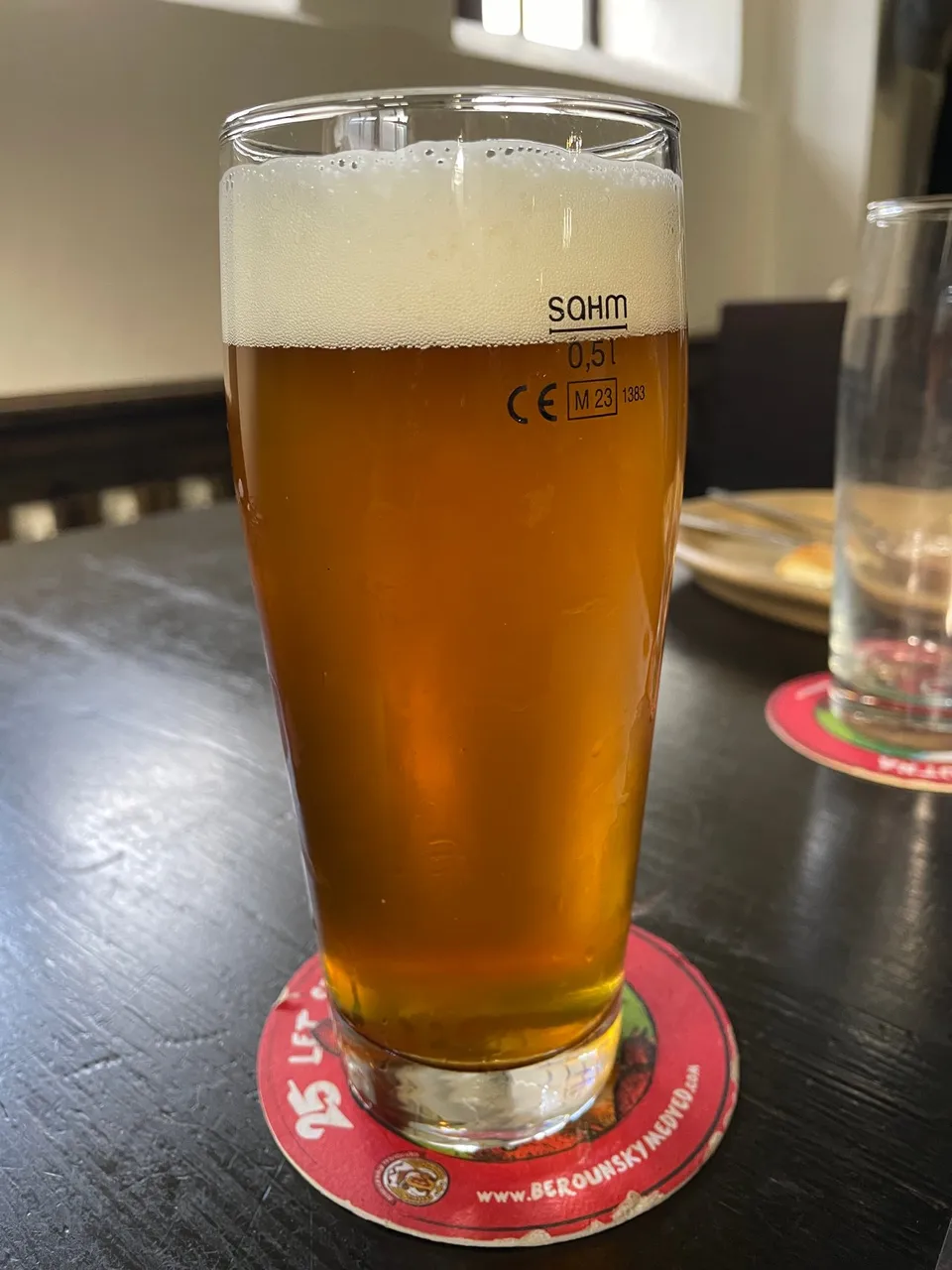The Czechs have a deep love for beer and enjoy various outdoor activities. Often, we combine the two, which raises many eyebrows. I consider myself a bit more responsible than the average person from my country, but even I gulped two beers while canoeing down the Berounka River two weeks ago. In my defense, I had them in a camp after we had safely passed the only weir on our journey, which was the most dangerous part of our trip by far. Nonetheless, I made sure to stay sober, knowing that our adventure would bring us into the town of Beroun, where we would catch a train back to Prague. The beer buffs should note that the train station in Beroun is guarded by a bear—medvěd in Czech. And since this is a #beersaturday post, you've most likely guessed that Medvěd is a name of a family brewery.
Jako Češi milujeme pivo, a zároveň máme slabost pro různé outdoorové aktivity. Často výše uvedené kombinujeme, což spoustu lidí nepřestává fascinovat. A i když se v tomhle směru pokládám za nadprůměrně zodpovědného, musím přiznat, že při splouvání Berounky jsem si po cestě dvě piva dal taky. Nicméně vodáci vědí, že Berounka je nudná a pomalá řeka, spíše olej. A navíc jsem se napil až po jediném jezu na naší trase. Taky jsem nechtěl pít moc, protože jsem věděl, jaký klenot na nás čeká v Berouně, kde jsme měli nasednout na vlak do Prahy. Tedy klenot, ona je to šelma. Berounský medvěd. Rodinný minipivovar.

The bear serves as the coat of arms animal for Beroun, and the town hosts three of these creatures in a large enclosure on a hill just beside the city center. These bears have actually become celebrities, having starred in a popular TV show for kids when they were cubs. Rest assured, the show was not about exploiting animals; it followed the growing up of three bear siblings who had lost their mother and were cared for by a skilled gamekeeper. Under his watchful eye, they grew from adorable little furballs into the majestic beasts they are today. Nonetheless, the beer bear at the brewery may not be as cute as those bear cubs, but it certainly aims to ensure you find your way to the brewery.
Medvěda má Beroun ve znaku, a taky v něm bydlí tři slavní medvědi z populárního večerníčku. Mají velký výběh na kopci hned vedle centra. Jejich příběh, kterak byli coby malá osiřelá medvíďata nalezeni a vypipláni, asi znáte. Pivní medvěd není tak roztomilý jako byli tři televizní chlupáči, ale pro dospělé má kouzlo i on. Tím spíše, že vás navádí až do pivovaru.
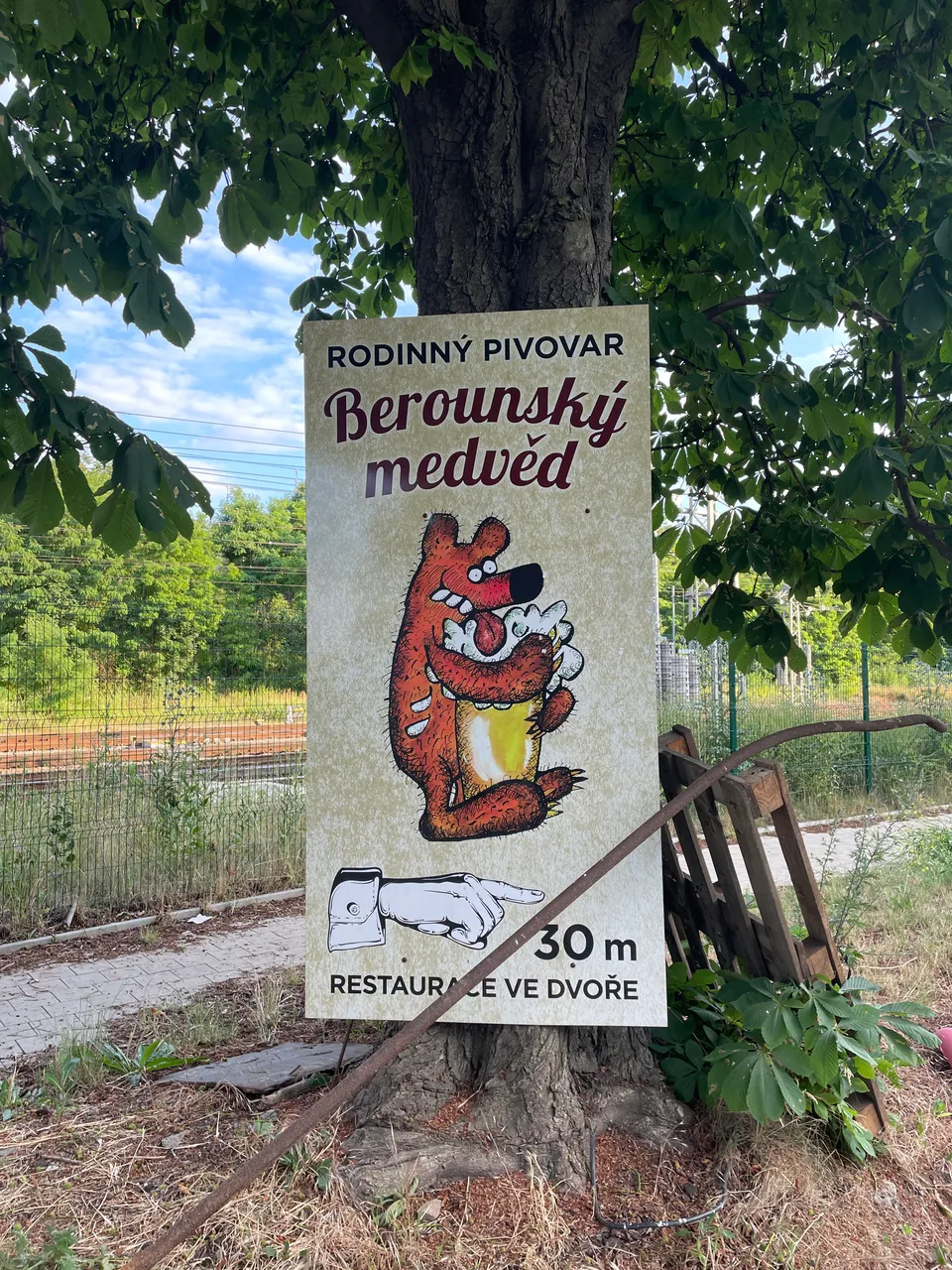
When I first visited this brewery several years ago, I was surprised by the neglected surroundings. It is located in a brownfield area within an industrial zone, occupying the only maintained building there. And there is a quirky military scrapyard right next to the brewery. I suspect wracks are old Soviet vehicles that participated in the '68 Soviet invasion of Czechoslovakia.
Když jsem tu byl před lety prvně, překvapilo mě, jak je okolí zanedbané. Je to vlastně brownfield industriální zóny a pivovar je jediná opravená budova široko daleko. A aby toho nebylo málo, je před ním hřbitov vojenské techniky, dost možná té, kterou k nám v osmašedesátém dovedli naši sovětští "bratři". Ale já na vojně nebyl, tak jen hádám.


Despite its unusual location, the brewery attracts bikers, tourists, and even canoe sailors like us all find their way here. The brewery restaurant features a terrace with a view of the military relics and a stylish, old-fashioned interior. And for those who have never seen raw hops, they hang from the ceiling everywhere.
Nezvyklému okolí navzdory láká pivovar cyklisty, turisty i vodáky. Pivovarská restaurace má terasu s výhledem na vojenské vraky a celkem stylový retro interiér. Mimochodem, pokud nevíte, jak vypadá chmel, tady visí u stropu po celé restauraci.
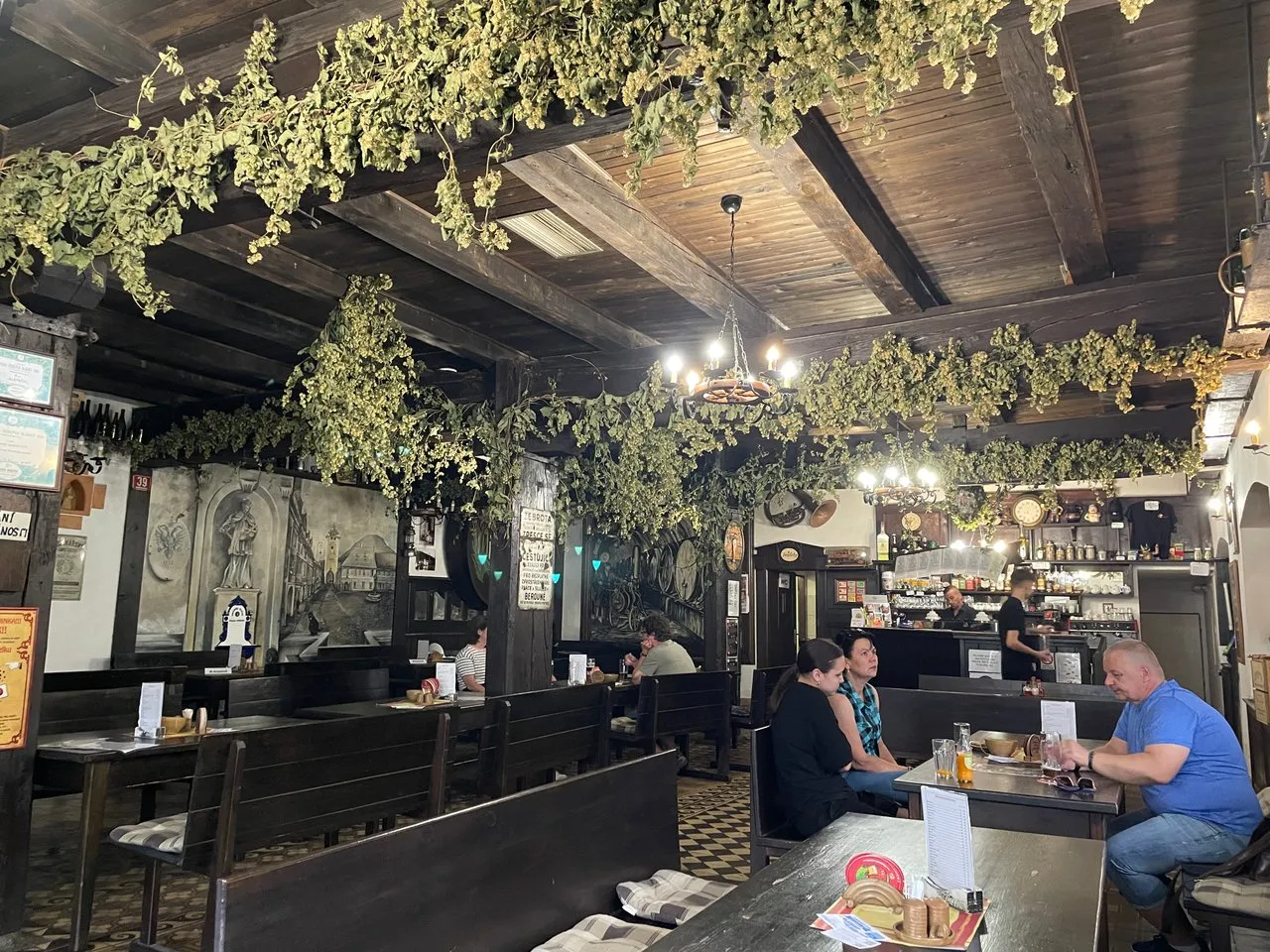
Berounský medvěd is one of the younger breweries in the Czech Republic, having been established a mere 150 years ago, although the town of Beroun was granted brewing rights by King Wenceslas II in 1295. Unfortunately, I couldn't find much information about its past, except that the original brewery operated for a century until production ceased in 1978. The current brewery is a family business run by the Mayers, who succeeded in renovating the building and reopening the venue in 1998. The brewery primarily caters to locals and seasonal tourists. It frequently hosts outdoor festivals in the yard and cultural events indoors.
Berounský medvěd patří k těm mladším pivovarům, založený byl jen před 150 lety, i když v Berouně se pivo vařilo od doby, kdy městu Václav II. udělil v roce 1295 právo várečné. Bohužel se mi nepodařilo najít o pivovaru více informací. Vím jen, že ten původní zavřel v roce 1978. Po revoluci ho získala rodina Mayerova, a jako rodinný pivovar jej znovu otevřeli v roce 1998. Chodí sem hlavně místní a v sezoně i turisté. Před restaurací se konají festivaly a uvnitř čas od času koncerty a jiné kulturní akce.
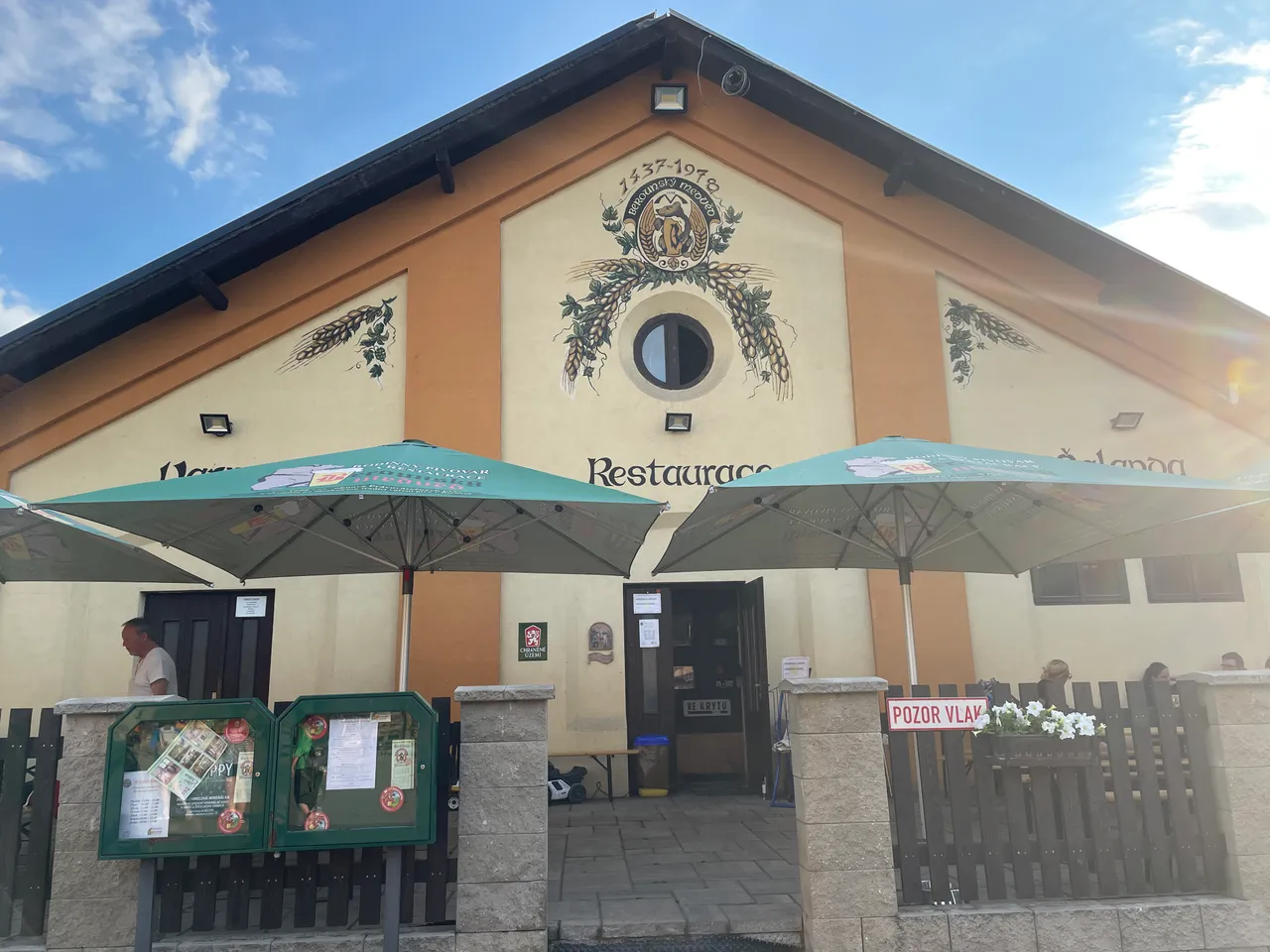
And now, let's dive into the beer, shall we? I sampled three different brews, starting with what we call a "cyclist beer" - a Bohemian lager with low alcohol content, usually around 2.5-3% ABV, thanks to its minimal malt content. This low malt concentration gives these beers a more pronounced bitterness, highlighting the hoppy flavors. In this particular brew, the yeast aroma was quite distinct, and its presence could be detected in the overall taste. However, it was complemented by a pleasant range of bitter hoppy notes. I thoroughly enjoyed this one!
A teď se vrhneme na pivo. Ochutnal jsem tři různá, včetně osmičky, takzvaného cyklopiva. Piva s nízkým obsahem sladu mají málo alkoholu, a jsou také více hořká (pozor, @bucipuci!). V jejich výraznější hořkosti vystupují chmelové chutě. V tomto pivu bylo kvasnicové aroma poměrně výrazné a jeho přítomnost byla v celkové chuti patrná. Doplňovala ji však příjemná škála hořkých chmelových tónů, takže jsem ho vypil, ani jsem nemrkl. Dobré pivo!
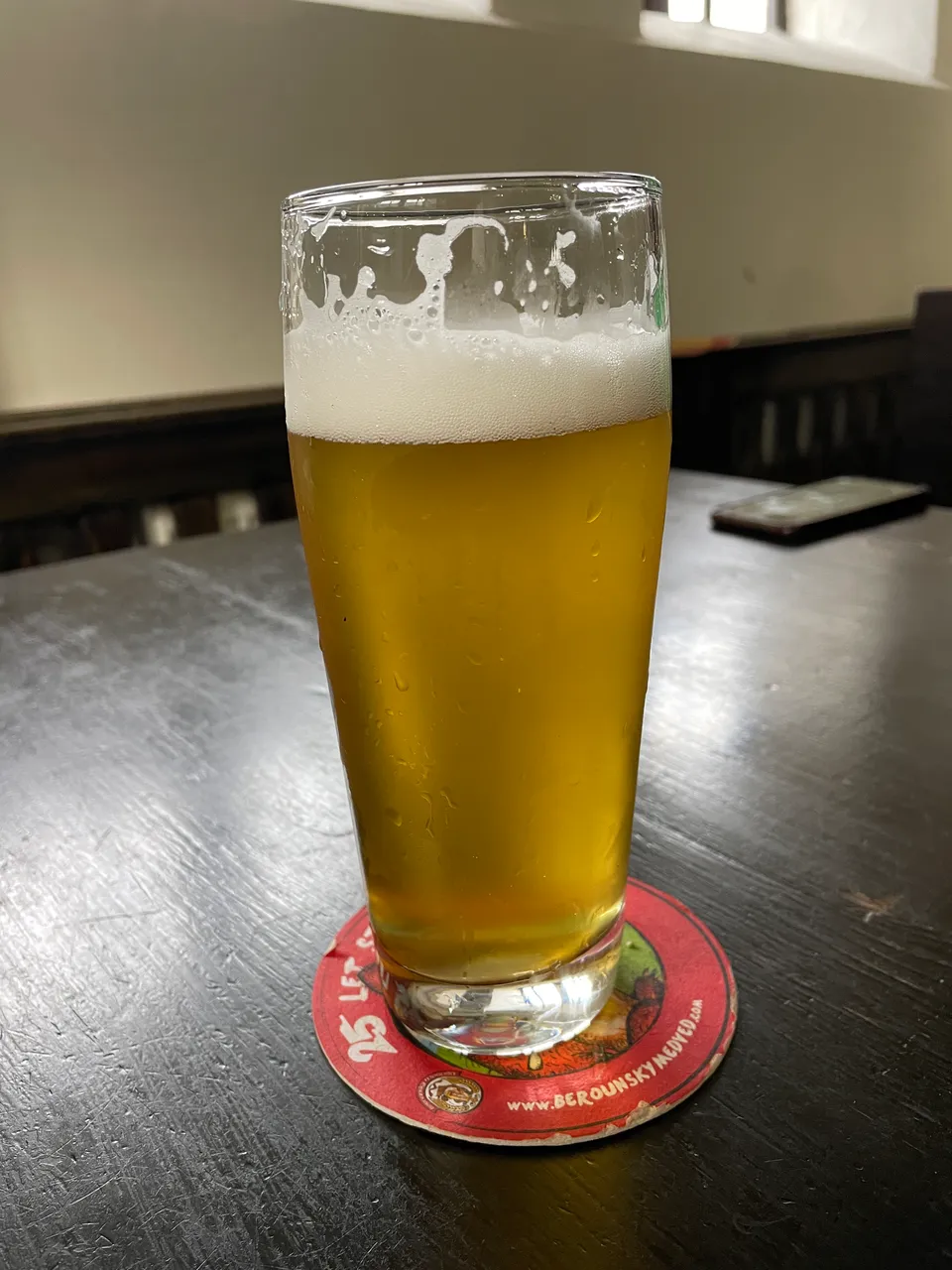
Moving on to the second beer, I tried a semi-dark honey lager brewed with honey sourced from the local woods. It was a sweet brew with an almost mead-like aroma. The distinct honey flavor was the highlight here, although in the aftertaste, some typical semi-dark notes, such as roasted coffee, helped balance the overall experience. This beer stood out as one of the most honey-forward brews I've ever tasted.
A teď ke druhému pivu. Byl to polotmavý medový ležák z medu z okolních lesů. Byl hodně sladký, skoro až medovinový. Med byl naprosto dominantní chutí, i když ho v dozvucích tlumily typické tóny polotmavých piv, třeba pražená káva, takže výsledek byl trochu vyváženější. Každopádně jde o jedno z nejmedovějších piv, které jsem kdy pil.
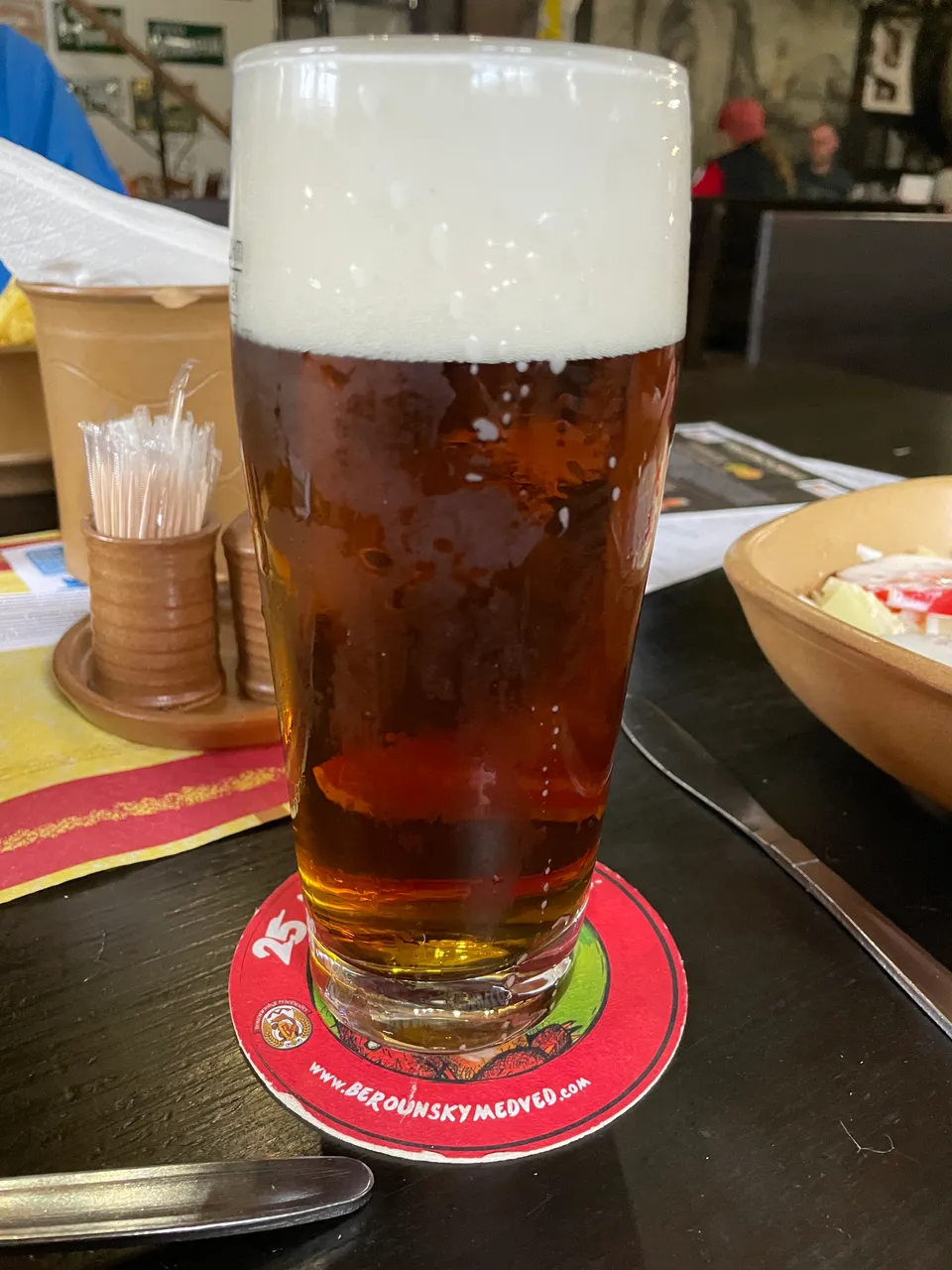
Lastly, I couldn't resist trying the local "dvanáctka" called František, which represents the most traditional Czech-style lager. Alas, František was rather plain, lacking any dominant aromas. Typically, small breweries brew more distinct batches, but in the case of František, it didn't leave a lasting impression. It's a well-crafted Czech lager that isn't remarkable in any particular way. I must admit, though, that my taste buds weren't as sharp as usual after six hours of paddling on a hot summer day and tasting the previous lagers.
A nakonec jsem si musel dát Františka, tradiční českou dvanáctku. Bohužel to bylo pivo poměrně nudné, bez jakýchkoli výrazných chutí. Malé pivovary se většinou snaží vařit chuťově výrazné kousky, ale František ve mně nezanechal žádný zvláštní dojem. Ale musím uznat, že po šesti hodinách pádlování v horkém letním dni a ochutnávkách ostatních piv včetně těch dvou po cestě byly moje chuťové pohárky asi lehce otupělé.
